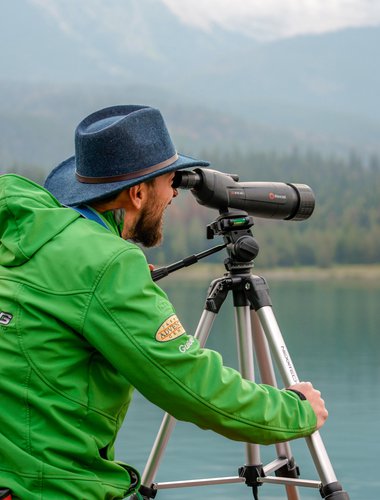A wildlife encounter, when handled safely, can transform a trip. Seeing an animal in its natural habitat is a remarkable experience – it's also an incredible reminder of the important role national parks play in biodiversity protection.
In Jasper National Park, on any given day, there’s a good chance of seeing wildlife. That’s part of what makes this place so extraordinary. But having healthy populations of wild animals isn’t a given; it’s something we have to protect. Both local residents and visitors have a responsibility to follow Parks Canada’s safety regulations. Doing so will help ensure safety of all involved and keep our wildlife wild.
Watch the video below for a quick overview of the rules, and read further for a full explanation from Parks Canada. Remember that you are responsible for your own safety, and that Jasper is counting on you to be a good wildlife steward.
Do not approach wildlife
Different animals require different distances from humans. To keep yourself (and the animal) safe, stay 30 metres (3 bus lengths) away from elk and other similar species and 100 metres (10 bus lengths) away from bears and other large predators. Stay on designated trails, as unofficial trails are often used by wildlife.
Do not feed wildlife
Giving wild animals food, either directly or by leaving edible items outside and unattended (meaning: keep your campsite clean and coolers in the car), is unlawful in a national park. When wildlife eat human food it can cause a variety of unfortunate effects, ranging from addiction to dangerous boldness to nutrient issues.
Stay in your vehicle when viewing wildlife from the road
When driving through Jasper National Park, it’s not uncommon to spy sheep, elk and other grazers along the side of the road. To watch them, pull over to the shoulder and stay in your vehicle. Use a telephoto lens to get that 'perfect' picture and quickly continue on your way.











